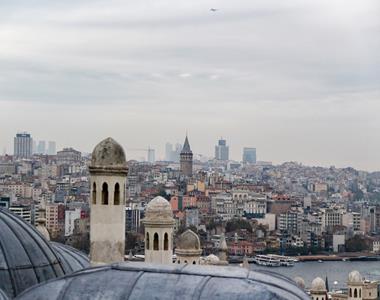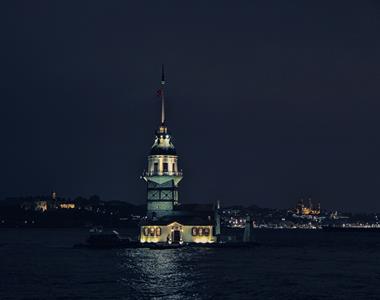Walls of Constantinople
The Ancient Walls of Constantinople
Many of the oldest cities around the world have walls which span around their outer edges, either still standing, or with the odd stone still present. The Walls of Constantinople however, which run around the edge of what is today Istanbul, are steeped with more history than most cities can lay claim to.
The Walls of Constantinople were built by Constantine the Great, and they original surrounded the entire city on all different sides. The walls were designed to protect this strategically placed city not only from land invasion, but from the sea also. Istanbul is surrounded by not only the Sea of Marmara, but the Black Sea also connected via the mighty Bosphorus Strait. This meant that any army coming from any country within the entire region could have found a way in, unless protection was put into place.
Over time, various additions have been made to the Walls of Constantinople, and modifications made to fix problems and create a larger protection wall. This was mostly during the Ottoman Empire, when all manner of invaders tried their luck. The walls today are not completely as they were back in the day, but the various stones and blocks of wall which still stand who you the intricacy, size, and span of the original walls, and really take you back in time. The Walls of Constantinople are without a doubt one of the largest and intricate protection systems built in history.
The History of the Walls of Constantinople
The first round of fortifications were built during the 8th century BC, when the city was founded by the Greeks. The city was named Byzantium and was considerably smaller than it is now. Byzantium contained little more than a small acropolis, however the positioning of the city was seen as vitally important for trade, and so the city began to grow in size as the years passed by. With this growth, the walls were added to.
Constantine the Great then moved the capital of the Byzantine Empire to what is now Istanbul, and he decided to expand the city even more. The wall was once more extended, however at this point it was still only one wall, with towers placed at strategic points.
The original wall stood until the end of the Byzantine Era, before being replaced by the famous Theodosian Walls. These were double walls, but in the 5th century, and were considered to be completely impassable by anyone. The walls protected the city from various sieges, however, a series of cannon shots finally passed through the walls in 1453, which handed Constantinople over to the Ottomans.
The Ottomans fixed and maintained the walls, extending them as the city began to grow during this affluent period of time.
The Walls of Constantinople Today
Today you can see large sections of the original walls, some of which do date back to the Byzantine era. Restoration work has gone on throughout the last couple of decades, to try and hold onto the walls for as long as possible, and allow visitors to Istanbul to gaze upon their sheer might and beauty. This really is a true window to the past, and one which must be maintained for as long as nature allows.
When the walls were in their original state, there several gates and towers at certain points across the distance, and some of the ruins of these can still be seen today also.
 There are certain points in the city where you can visit and get a good view of the walls, as well as being able to reach out and touch certain parts. There are large sections still intact, and the best vantage point to head to is probably in Fatih. There are many tour operators who will take you on walking tours of the walls, and also take you to the fortress points which are still remaining. Many of the gates have been restored, however many parts of the walls have been left in their original state. Remember, these walls stretched in excess of 4 miles around the city, so there is sure to be several points for you to visit.
There are certain points in the city where you can visit and get a good view of the walls, as well as being able to reach out and touch certain parts. There are large sections still intact, and the best vantage point to head to is probably in Fatih. There are many tour operators who will take you on walking tours of the walls, and also take you to the fortress points which are still remaining. Many of the gates have been restored, however many parts of the walls have been left in their original state. Remember, these walls stretched in excess of 4 miles around the city, so there is sure to be several points for you to visit.
The Chora Church is probably the easiest spot to visit and see the span of the walls, as this is at a high vantage point and is surrounded by the walls from either side. Again, this is in Fatih and as this is the oldest part of the entire city standing today, you will be able to truly appreciate history much more in this region, than perhaps anywhere else.
Location
Place Inforamtion
- Place Address : Dervişali, Hoca Çakır Cd. No:1, 34087 Fatih/İstanbul, Turkey
- Place Rating : 4.4
- Visit Hours : Opened Daily
- Learn how to reach this place.
- Taksim: Take Metro M2. At Yenikapı station take Bus 31Y and transfer Bus BN2 Yenikapı Sahil Station.
- Kadıkoy: Take Metro M4 to Ayrılıkçeşmesit Station transfer to Marmaray at Kazlıçeşme station take Bus BN3 leave at Yedikule sahil station and walk.
- Sultanahmet: Take Buses BN 1 or BN2.
- Istanbul Ataturk Airport: Take bus number TH-1and transfer to Bus BN2 İdo iskelesi station and leave Yedikulesahil station and wail.









